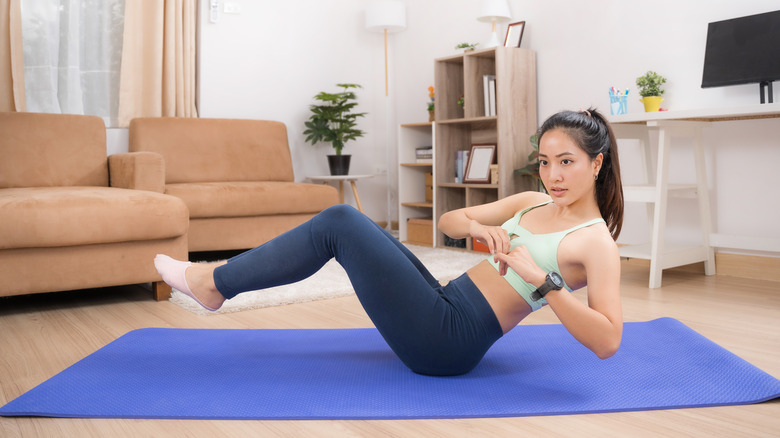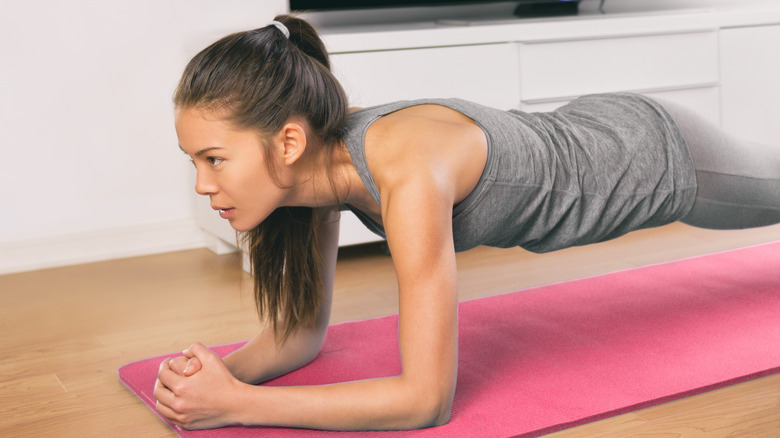What Are Russian Twists And Are They Good For You?
Social media has made it easier than ever to get in shape. Every platform offers a way to connect with certified trainers, access free lessons, and find motivation through new moves and inspirational posts. There is much to be said for the good social media has done for fitness. But where there is sweet, there is also sour. Some fitness trends have absolutely no basis in physical science. And while some merely have no real impact on your body tone or strength, others, like the Russian twist, can actually cause harm.
When performed correctly, the Russian twist requires someone to sit on the ground with their knees bent and feet lifted off the floor (via Healthline). The upper body and thighs should form a "v" shape while the feet are parallel to the floor, toes pointing forward. The person then twists their torso from side to side, sometimes while holding a weight.
Your back won't thank you
It seems like a great exercise for people who work out at home, especially in smaller spaces. It is supposed to target the obliques and force a person to engage their core as they twist. And if a person has fitness experience, it may do just that. But Men's Health makes it clear that the risks are higher than the possible rewards. They spoke with Mike Robertson, certified strength and conditioning specialist, and he did not mince words. Doing Russian twists, said Robertson, "puts a ton of stress on the lumbar spine," also known as the lower back.
This warning is echoed by James Thomas, a national trainer for Les Mills, who told NBC that, "Combining the compression and flexion of this movement with rotation places a lot of pressure on the spinal disc, excessive compression of the lumbar spine, and movement of disc fluid." He instead suggests doing a forearm plank with hip dips for an oblique-targeting move that doesn't put your back in danger.


